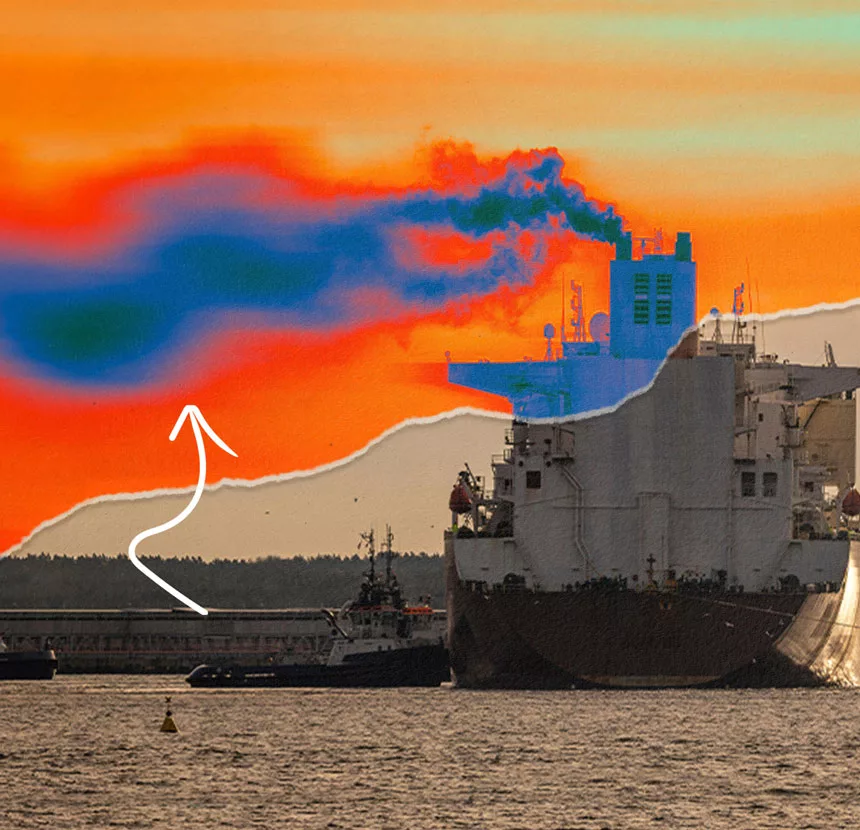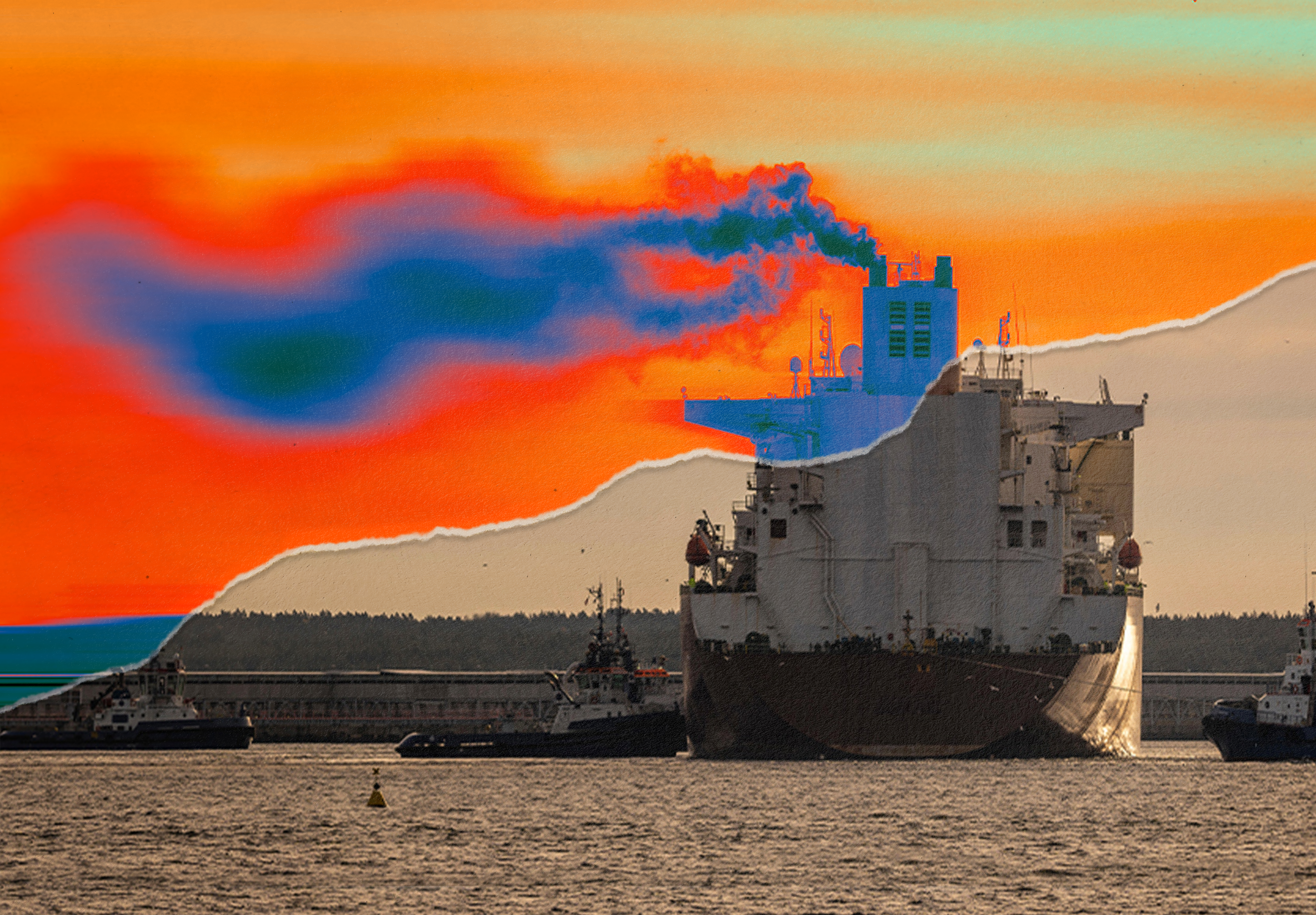Despite being greenwashed as a cleaner alternative – Liquefied Natural Gas (LNG) is a climate pollutant and has no place in a sustainable shipping future.
It’s time to set the record straight.

In fact, methane is 82 times more potent than carbon dioxide (CO2)
What is Liquefied Natural Gas?
LNG (or liquified natural gas) is a dirty fuel. It is composed of mostly methane that leaks into the air at every stage. Currently, most LNG is a fossil fuel.
Why does this matter? Because methane emissions are responsible for 25% of global warming and pack a stronger short-term punch than even carbon dioxide.

Methane emissions from LNG shipping rose by 180% between 2016 and 2023.
How is LNG used?
False: LNG advocates have been promoting LNG as a “climate-friendly” alternative fuel that produces fewer CO2 emissions and is a low-risk pathway to decarbonizing the shipping industry.
True: What they don’t tell you is that LNG replaces CO2 emissions with methane emissions – a greenhouse gas that causes air pollution, crop loss, and health implications.

The Tide Needs to Turn on LNG
It’s time to end shipping’s dependence on fossil fuels and invest in sustainable zero-emission solutions and technology. It’s time to create climate policies that regulate methane usage. It’s time to take a stand. For our resources. Our communities. Our planet.
It’s time to Say No to LNG.

Frequently Asked Questions
While LNG emits less CO2, SOx, NOx, and particulate matter than traditional marine fuels, it does release a substantial amount of methane — a harmful greenhouse gas. With a warming effect 80 times more powerful than CO2, methane is one of the biggest drivers of climate change today. Not only is there no climate benefit to using LNG as a fuel for shipping, but a growing dependency on it will exacerbate the climate crisis.
Methane slip is the escape of unburned methane. Methane slip occurs at several points in the LNG lifecycle, including when methane isn’t fully burned during combustion (combustion slip) or when methane escapes directly from the exhaust valve of a ship’s engine (direct escape). Since methane is such a potent greenhouse gas, even small amounts of escaped methane (“slipping”) contribute to the climate crisis.
Currently, there are no international regulations on the methane emissions that come from LNG use in ships. However, there are various efforts underway to address this. These include the FuelEU Maritime initiative, which will regulate the lifecycle of marine fuels and restrict the use of LNG in and between European Union ports starting in 2025. Over 100 countries signed the Global Methane Pledge to reduce methane emissions by 30% by 2030. The International Maritime Organization (IMO) is also under pressure to introduce regulations that would set prices on greenhouse gas emissions and encourage investment in zero-emissions solutions.
It’s important to be aware of the downsides of LNG:
- It damages the environment: LNG produces significant amounts of methane emissions, with dire consequences for the climate crisis.
- It’s financially risky: between uncertain geopolitics, a volatile and risky LNG market, and increased pressure due to climate change, investors are already pulling out of LNG projects.
- It diverts resources away from renewable energy: continued investment into LNG prevents us from exploring and investing in more sustainable energy options.